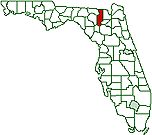Florida Children Benefit From Anti-Poverty Programs
Posted February 27, 2015 04:59 am
 TAMPA,
FL – Poverty intervention programs are lifting half a
million children out of poverty in Florida. That's the
findings of a report released Wednesday by the Annie
E. Casey Foundation that uses a relatively new
method of quantifying poverty to illustrate the
difference federal assistance makes in the lives of
children.
TAMPA,
FL – Poverty intervention programs are lifting half a
million children out of poverty in Florida. That's the
findings of a report released Wednesday by the Annie
E. Casey Foundation that uses a relatively new
method of quantifying poverty to illustrate the
difference federal assistance makes in the lives of
children.
"Measuring Access to Opportunity in the United States," shows the rate of child poverty in Florida is 21 percent, but would jump to 35 percent without safety net resources, explains Susan Weitzel director with Florida Kids Count.
 "These
supports provide the base housing and food structures to
provide an opportunity for them to utilize education and
employment," says Weitzel. "Our families, our children
need these base supports."
"These
supports provide the base housing and food structures to
provide an opportunity for them to utilize education and
employment," says Weitzel. "Our families, our children
need these base supports."
Today's report uses the Supplemental Poverty Measure
(SPM), which Weitzel says provides a more complete
picture of how families fare when compared to the
current method of measuring the impact of programs.
The current method used to measure poverty was developed
in the 1960s and according to the U.S. Census Bureau
sets a standard of $24,000 a year for a family of four,
regardless of where that family lives or accounting for
inflation.
Laura Speer, associate director for policy reform and
advocacy with the Annie E. Casey Foundation, explains
better measurement tools, such as the SPM, are important
to make improvements in public programs.
"Using the Supplemental Poverty Measure we can really
see the successes and the limitations of the safety net
resources we've put into place," Speer says. "We can
also see these resources don't go far enough. We still
see that there are 13 million children below the poverty
line."
The SPM takes into account living costs such as
medicine, housing, food and utilities and how those
costs affect disposable income. It also accounts for how
government programs such as SNAP help offset those
costs. Weitzel says considering what the benefits
programs provide is valuable when planning how to move
forward.
"Without quantifying these successful outcomes, we would
never really quite know where to put our dollars and
what would lead to the most success for our children and
families," she says.
The Annie E. Casey report recommends state and federal
governments expand access to early childhood education,
change tax credit policies to keep more money in the
hands of struggling families and streamline food and
housing subsidies.
Photos/graphics; links; added and updated by the Observer
This piece was reprinted by the Columbia County Observer with permission or license. It may not be reproduced in any form without permission or license from the source.
